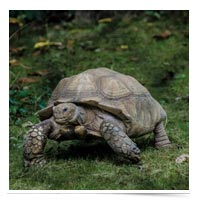 If you’ve never heard of the “Slow Movement,” you might think it means to simply appreciate life’s moments more, or remind yourself to slow down your life so it doesn’t pass you by. And while it’s true that the Slow Movement advocates for a savoring of the “minutes and hours” rather than simply counting them, at its core is a deeper truth. As Professor Guttorm Fløistad says of the philosophy:
If you’ve never heard of the “Slow Movement,” you might think it means to simply appreciate life’s moments more, or remind yourself to slow down your life so it doesn’t pass you by. And while it’s true that the Slow Movement advocates for a savoring of the “minutes and hours” rather than simply counting them, at its core is a deeper truth. As Professor Guttorm Fløistad says of the philosophy:
“The only thing for certain is that everything changes. The rate of change increases. If you want to hang on you better speed up. That is the message of today. It could however be useful to remind everyone that our basic needs never change. The need to be seen and appreciated! It is the need to belong. The need for nearness and care, and for a little love. This is given only through slowness in human relations. In order to master changes, we have to recover slowness, reflection and togetherness. There we will find real renewal.”
It can be hard, however, to get the body to obey the mind’s rational desire to embrace a slower pace, or a more measured approach to attention, concentration, and care. Some of this is physiological, too. The body, amped up on caffeine, poised to respond to every notification from a smartphone, and assaulted by media at every moment, needs physical cues at times to downshift.
One such cue you can nurture is deep breathing. But not just any deep breathing. A particularly effective method is the “4-7-8 Breath.” It works this way:
1. Exhale completely through your mouth, making a whoosh sound.
2. Close your mouth and inhale quietly through your nose to a mental count of four.
3. Hold your breath for a count of seven.
4. Exhale completely through your mouth, making a whoosh sound to a count of eight. This is one breath.
5. Now inhale again and repeat the cycle three more times for a total of four breaths.
(Source: “Breathing Exercises: 4-7-8 Breath“)
Bring this slow practice into your day. Set an alarm on your phone as a reminder. Changing the way we breathe has been shown to “change our emotional states and how we interact with the world.”
And couldn’t we all use a little more of that in our day? Here’s to slowing it down.


